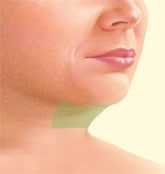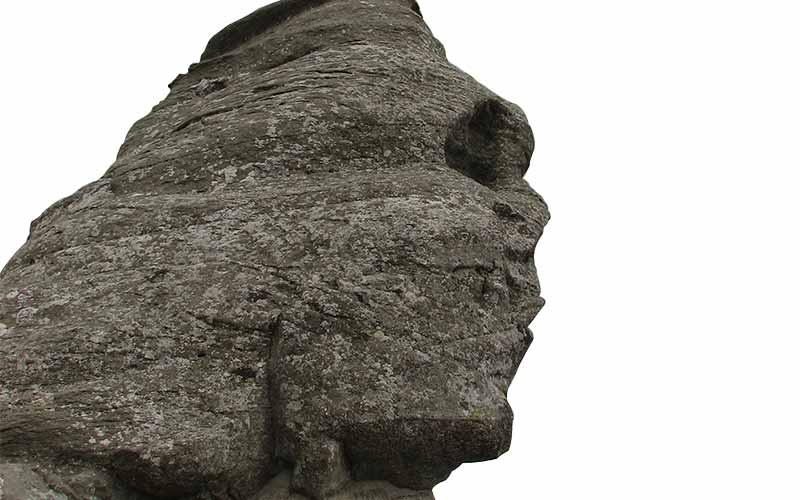liposuction for the face
Liposuction is a procedure that can help sculpt the body by removing unwanted fat from specific areas, including the abdomen, hips, buttocks, thighs, knees, upper arms, chin, cheeks and neck. During the past decade, liposuction, which is also known as “lipoplasty” or “suction lipectomy,” has benefited from several new refinements. Today, a number of new techniques, including ultrasound-assisted lipoplasty (UAL), the tumescent technique, and the super-wet technique, are helping many plastic surgeons to provide selected patients with more precise results and quicker recovery times. Although no type of liposuction is a substitute for dieting and exercise, liposuction can remove stubborn areas of fat that don’t respond to traditional weight-loss methods.
If you’re considering liposuction, this information will give you a basic understanding of the procedure — when it can help, how it is performed and how you might look and feel after surgery. It won’t answer all of your questions, since much depends on your individual circumstances. Please ask your doctor if there is anything about the procedure you don’t understand.
Liposuction Procedure Notes

Liposuction is a procedure in which localized deposits of fat are removed to recontour one or more areas of the body. Through a tiny incision, a narrow tube or cannula is inserted and used to vacuum the fat layer that lies deep beneath the skin. The cannula is pushed then pulled through the fat layer, breaking up the fat cells and suctioning them out.
The suction action is provided by a vacuum pump or a large syringe, depending on the surgeon’s preference. If many sites are being treated, your surgeon will then move on to the next area, working to keep the incisions as inconspicuous as possible.
Fluid is lost along with the fat, and it’s crucial that this fluid be replaced during the procedure to prevent shock. For this reason, patients need to be carefully monitored and receive intravenous fluids during and immediately after surgery.
Candidates
To be a good candidate for liposuction, you must have realistic expectations about what the procedure can do for you. It’s important to understand that liposuction can enhance your appearance and self confidence, but it won’t necessarily change your looks to match your ideal or cause other people to treat you differently. Before you decide to have surgery, think carefully about your expectations and discuss them with your surgeon.
The best candidates for liposuction are normal-weight people with firm, elastic skin who have pockets of excess fat in certain areas. You should be physically healthy, psychologically stable and realistic in your expectations. Your age is not a major consideration; however, older patients may have diminished skin elasticity and may not achieve the same results as a younger patient with tighter skin.
Liposuction carries greater risk for individuals with medical problems such as diabetes, significant heart or lung disease, poor blood circulation, or those who have recently had surgery near the area to be contoured.
Of course, individual results can vary, but if your expectations are realistic, you will probably be very pleased with the results of your surgery. You may find that you are more comfortable in a wide variety of clothes and more at ease with your body. And, by eating a healthy diet and getting regular exercise, you can help to maintain your new shape.
The basic technique of liposuction, as described above, is used in all patients undergoing this procedure. However, as the procedure has been developed and refined, several variations have been introduced.
Fluid Injection, a technique in which a medicated solution is injected into fatty areas before the fat is removed, is commonly used by plastic surgeons today. The fluid — a mixture of intravenous salt solution, lidocaine (a local anesthetic) and epinephrine (a drug that contracts blood vessels) — helps the fat be removed more easily, reduces blood loss and provides anesthesia during and after surgery. Fluid injection also helps to reduce the amount of bruising after surgery.
The amount of fluid that is injected varies depending on the preference of the surgeon.
Tumescent technique – Large volumes of fluid — sometimes as much as three times the amount of fat to be removed — are injected in the tumescent technique. Tumescent liposuction, typically performed on patients who need only a local anesthetic, usually takes significantly longer than traditional liposuction (sometimes as long as 4 to 5 hours). However, because the injected fluid contains an adequate amount of anesthetic, additional anesthesia may not be necessary. The name of this technique refers to the swollen and firm or “tumesced” state of the fatty tissues when they are filled with solution.
The super-wet technique is similar to the tumescent technique, except that lesser amounts of fluid are used. Usually the amount of fluid injected is equal to the amount of fat to be removed. This technique often requires IV sedation or general anesthesia and typically takes one to two hours of surgery time.
Ultrasound-Assisted Lipoplasty (UAL). This technique requires the use of a special cannula that produces ultrasonic energy. As it passes through the areas of fat, the energy explodes the walls of the fat cells, liquefying the fat. The fat is then removed with the traditional liposuction technique.
UAL has been shown to improve the ease and effectiveness of liposuction in fibrous areas of the body, such as the upper back or the enlarged male breast. It is also commonly used in secondary procedures, when enhanced precision is needed. In general, UAL takes longer to perform than traditional liposuction.
Pre-Operative Consultation
In your initial consultation, your surgeon will evaluate your health, determine where your fat deposits lie and assess the condition of your skin. Your surgeon will explain the body-contouring methods that may be most appropriate for you. For example, if you believe you want liposuction in the abdominal area, you may learn that an abdominoplasty or “tummy tuck” may more effectively meet your goals; or that a combination of traditional liposuction and UAL would be the best choice for you.
Be frank in discussing your expectations with your surgeon. He or she should be equally frank with you, describing the procedure in detail and explaining its risks and limitations.
Individuals considering liposuction often feel a bit overwhelmed by the number of options and techniques being promoted today. However, your plastic surgeon can help. In deciding which is the right treatment approach for you, your doctor will consider effectiveness, safety, cost and appropriateness for your needs. This is called surgical judgment, a skill that is developed through surgical training and experience. Your doctor also uses this judgment to prevent complications; to handle unexpected occurrences during surgery; and to treat complications when they occur.
Your surgeon’s education and training have helped to form his or her surgical judgment, so take the time to do some background checking. Patients are encouraged to consider a doctor certified by the American Board of Plastic Surgery (“ABPS”). By choosing a plastic surgeon who is certified by the ABPS, a patient can be assured that the doctor has graduated from an accredited medical school and completed at least five years of additional residency – usually three years of general surgery (or its equivalent) and two years of plastic surgery. To be certified by the ABPS, a doctor must also practice surgery for two years and pass comprehensive written and oral exams.
Operation and Recovery Logistics
Liposuction may be performed in a surgeon’s office-based facility, in an outpatient surgery center, or in a hospital. Smaller-volume liposuction is usually done on an outpatient basis for reasons of cost and convenience. However, if a large volume of fat will be removed, or if the liposuction is being performed in conjunction with other procedures, a stay in a hospital or overnight nursing facility may be required.
Your surgeon will give you specific instructions on how to prepare for surgery, including guidelines on eating and drinking, smoking, and taking or avoiding vitamins, iron tablets and certain medications. If you develop a cold or an infection of any kind, especially a skin infection, your surgery may have to be postponed.
Though it is rarely necessary, your doctor may recommend that you have blood drawn ahead of time in case it is needed during surgery.
Also, while you are making preparations, be sure to arrange for someone to drive you home after the procedure and, if needed, to help you at home for a day or two.
SURGERY DURATION
The time required to perform liposuction may vary considerably, depending on the size of the area, the amount of fat being removed, the type of anesthesia and the technique used.
ANESTHESIA
Various types of anesthesia can be used for liposuction procedures. Together, you and your surgeon will select the type of anesthesia that provides the most safe and effective level of comfort for your surgery.
If only a small amount of fat and a limited number of body sites are involved, liposuction can be performed under local anesthesia, which numbs only the affected areas. However, if you prefer, the local is usually used along with intravenous sedation to keep you more relaxed during the procedure. Regional anesthesia can be a good choice for more extensive procedures. One type of regional anesthesia is the epidural block, the same type of anesthesia commonly used in childbirth.
However, some patients prefer general anesthesia, particularly if a large volume of fat is being removed. If this is the case, a nurse anesthetist or anesthesiologist will be called in to make sure you are completely asleep during the procedure.
Post-Operative Care
After surgery, you will likely experience some fluid drainage from the incisions. Occasionally, a small drainage tube may be inserted beneath the skin for a couple of days to prevent fluid build-up. To control swelling and to help your skin better fit its new contours, you may be fitted with a snug elastic garment to wear over the treated area for a few weeks. Your doctor may also prescribe antibiotics to prevent infection.

Don’t expect to look or feel great right after surgery. Even though the newer techniques are believed to reduce some post-operative discomforts, you may still experience some pain, burning, swelling, bleeding and temporary numbness. Pain can be controlled with medications prescribed by your surgeon, though you may still feel stiff and sore for a few days.
It is normal to feel a bit anxious or depressed in the days or weeks following surgery. However, this feeling will subside as you begin to look and feel better.
Healing is a gradual process. Your surgeon will probably tell you to start walking around as soon as possible to reduce swelling and to help prevent blood clots from forming in your legs. You will begin to feel better after about a week or two and you should be back at work within a few days following your surgery. The stitches are removed or dissolve on their own within the first week to 10 days.
Activity that is more strenuous should be avoided for about a month as your body continues to heal. Although most of the bruising and swelling usually disappears within three weeks, some swelling may remain for six months or more.
Your surgeon will schedule follow-up visits to monitor your progress and to see if any additional procedures are needed.
If you have any unusual symptoms between visits — for example, heavy bleeding or a sudden increase in pain — or any questions about what you can and can’t do, call your doctor.
The scars from liposuction are small and strategically placed to be hidden from view. However, imperfections in the final appearance are not uncommon after lipoplasty. The skin surface may be irregular, asymmetric or even “baggy,” especially in the older patient. Numbness and pigmentation changes may occur. Sometimes, additional surgery may be recommended.
Risks and Challenges
Liposuction is normally safe, as long as patients are carefully selected, the operating facility is properly equipped and the physician is adequately trained.
As a minimum, your surgeon should have basic (core) accredited surgical training with special training in body contouring. Also, even though many body-contouring procedures are performed outside the hospital setting, be certain that your surgeon has been granted privileges to perform liposuction at an accredited hospital.
Your doctor must have advanced surgical skills to perform procedures that involve the removal of a large amount of fat (more than 5 liters or 5,000 ccs); ask your doctor about his or her other patients who have had similar procedures and what their results were. Also, more extensive liposuction procedures require attentive after-care. Find out how your surgeon plans to monitor your condition closely after the procedure.
However, it’s important to keep in mind that even though a well-trained surgeon and a state-of-the art facility can improve your chance of having a good result, there are no guarantees. Though they are rare, complications can and do occur. Risks increase if a greater number of areas are treated at the same time, or if the operative sites are larger in size. Removal of a large amount of fat and fluid may require longer operating times than may be required for smaller operations.
The combination of these factors can create greater hazards for infection; delays in healing; the formation of fat clots or blood clots, which may migrate to the lungs and cause death; excessive fluid loss, which can lead to shock or fluid accumulation that must be drained; friction burns or other damage to the skin or nerves or perforation injury to the vital organs; and unfavorable drug reactions.
There are also points to consider with the newer techniques. For example, in UAL, the heat from the ultrasound device used to liquefy the fat cells may cause injury to the skin or deeper tissues. Also, you should be aware that even though UAL has been performed successfully on several thousand people worldwide, the long-term effects of ultrasound energy on the body are not yet known.
In the tumescent and super-wet techniques, the anesthetic fluid that is injected may cause lidocaine toxicity (if the solution’s lidocaine content is too high), or the collection of fluid in the lungs (if too much fluid is administered).
FAQs
1. HOW LONG WILL MY BRUISES LAST?
That depends on the individual and their unique body chemistry. Everyone is different in the same way that one person may have blue eyes while the other has brown. But, in general, it takes about 2-3 weeks for most of the bruising to disappear. Traumeel™ is very useful during this time to accelerate the resolution of bruising. It is available through our office.
2. I AM VERY SWOLLEN, ESPECIALLY MY LEGS, 3 DAYS OUT FROM SURGERY. WHAT SHOULD I DO?
This is completely normal. During surgery, you are given a lot of fluid through your veins via an I.V. and it takes 7-10 days for your body to expel this. Certain parts of your body may just be swollen locally from the trauma created by the surgery; in these cases it may take 2-3 months for the majority of the swelling to dissipate. Don’t worry, you will be appreciating the dramatic changes afforded by your liposuction way before this time (generally after 2 weeks), but stubborn areas of swelling are normal. Judicious exercise, massage and deep lymphatic drainage can help accelerate your return to normal.
3. I FEEL WEAK AFTER LIPO. IS THIS NORMAL?
Yes it is. In large volume cases (up to 5 liters of fat aspirated), you may feel “winded” or unusually fatigued for about 2 weeks. This is because internal body fluids as well as fat and blood have been removed from your body during the process which will make anyone tired for a week or so. Drink plenty of fluids and take an Iron supplement. Remember that iron can constipate you as well as occasionally make you nauseated, so it may be wise to take a stool softener at the same time. Colace™ will do.
It is also important to change your posture gradually for the first 2 weeks after liposuction since you are more liable to get lightheaded or even faint if you change positions too rapidly. This happens because immediately after lipo you are relatively dehydrated within your vascular system and sudden changes in position will allow the blood to rush from your brain to your feet. This then produces a lightheadedness, nausea, cold sweat and loose bowels and even fainting – a syndrome complex doctors refer to as a vaso-vagal response. This can also happen if you are having baths, hot tubs or showers that are too hot in the postoperative period. If you feel this coming on at any time, immediately lie down. You will start feeling better within a minute.
4. I FEEL NUMB, PAIN AND ITCHING AT THE SAME TIME. IS THIS NORMAL?
These are all normal sensations after liposuction or any surgery for that matter. These may take several months to go away. You can employ regular moisturizers as soon as 1 week after surgery. Traumeel™ is a good alternative, however, because it not only reduces bruising, but it also provides a soothing, anti-inflammatory effect to your skin at this time. It is available at our office.
5. MY SKIN IS DRY. IS THIS NORMAL?
Yes it is. Again, it may take several months to return to normal. You can use your regular moisturizer 1 week after surgery.
6. WHEN WILL I SEE MY FINAL RESULTS FROM MY LIPO?
One will see results as soon as the garment is initially removed 2-4 days after the procedure. 95% of my patients are very happy at 2 weeks and 98% by 6. Final results can take up to 6 months to stabilize.
7. WILL FAT GO ELSEWHERE AFTER THE LIPO?
Remember that liposuction removes fat and fat has a weight. So if a surgeon removes 10lbs of fat then the baseline weight of that same patient (hopefully the point at which all body parts now are balanced in size and shape) will be shifted down by 10 lbs. For example, if a 150 lb patient gets 10 lbs removed from her, then her baseline weight will shift down to 140 lbs. However, if 6 months later she is 152 lbs, she may notice that her arms are fatter for example. She may think that she is only 2 lbs overweight at this time, but, in fact, she is actually 12 lbs overweight. It is important to pay attention to the scale and your actual weight after a liposuction procedure and not simply manage your weight by how well you look in the mirror and fit into clothes.
8. WHEN CAN I EXERCISE?
After 1 week if a small-to-moderate amount of liposuction was performed, but 2-3 weeks after more extensive surgical intervention. Remember, if exercise hurts postpone it for a later time and if it doesn’t you may proceed.
9. WHY DIDN’T YOU SUCK ALL THE FAT OUT, OR AT LEAST A LITTLE BIT MORE.
What is important is what the plastic surgeon leaves behind, not what he “sucks out”. The fat that is left behind not only confers smoothness but also gives the slender feminine shape. We, as plastic surgeons, are also limited in how much fat we can aspirate by safety concerns. Too much fat removed in one setting can result in potentially serious health concerns.
10. WILL LIPOSUCTION HELP MY SKIN APPEARANCE?
No, it will not help cellulite either. It can result in some skin tightening, but dimples that exist preoperatively will be there after the surgery as well.



